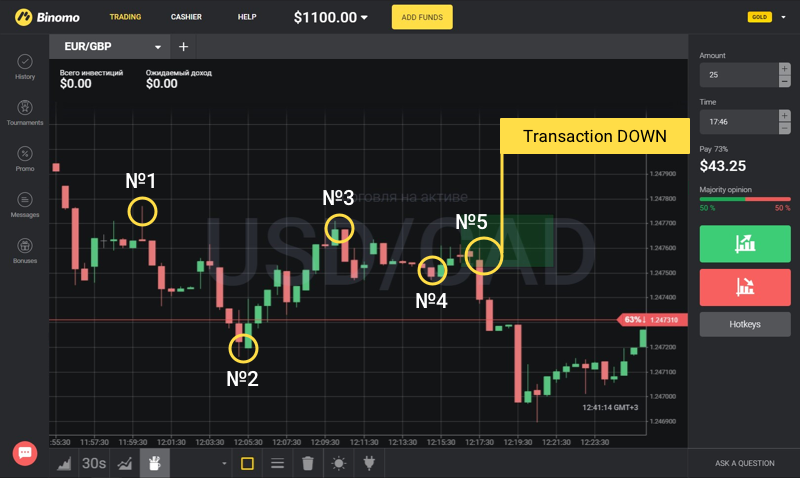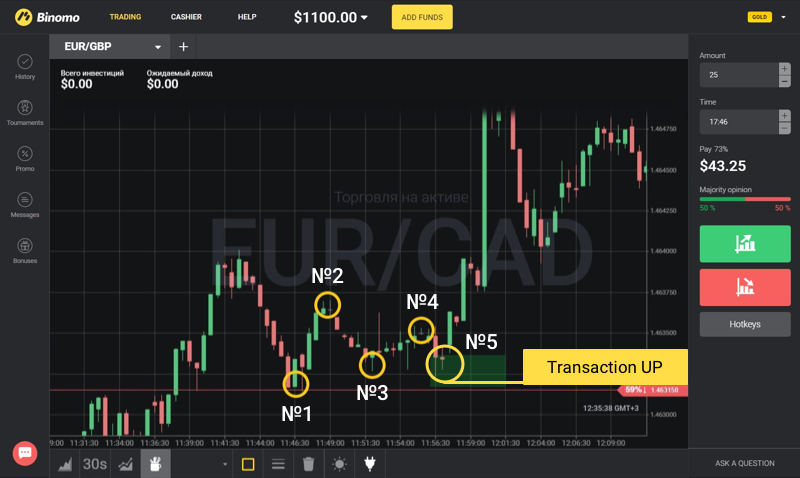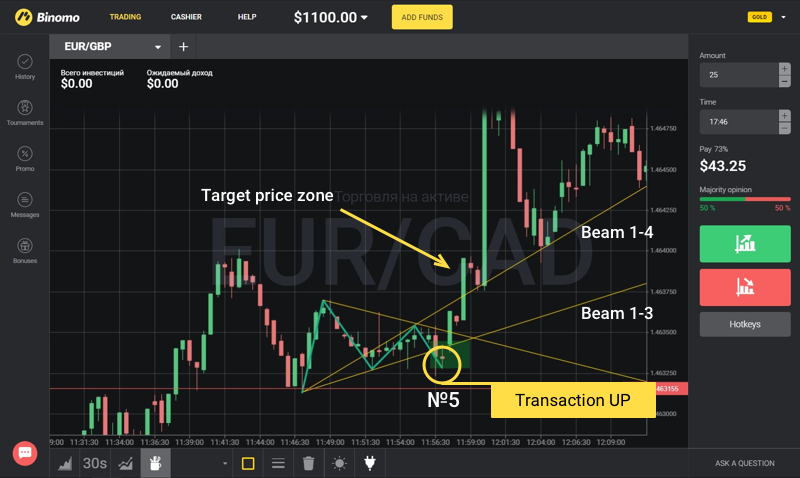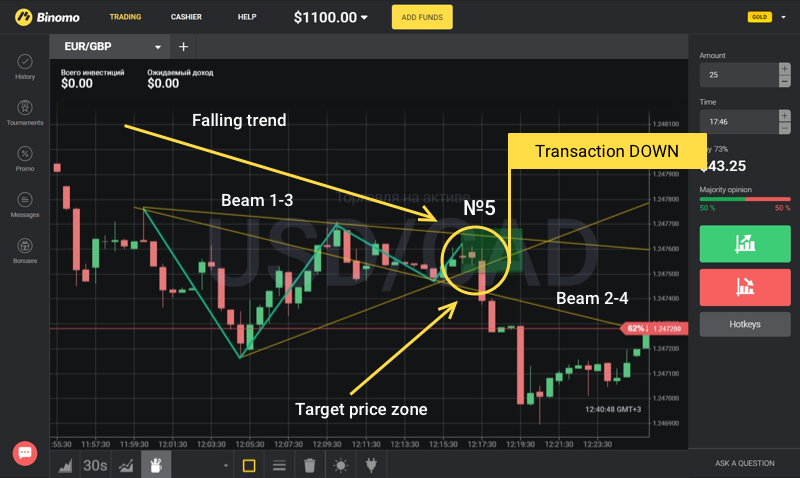The “Two Waves” strategy.
Have you heard the saying: “A trend is the trader’s best friend”? It means we should trade in the direction of the trend. But we often see on the chart the following picture: the trend is going, going, and then slows down. This slowdown is called consolidation. And if you know how to determine the end of consolidation, you will earn.
How to do it? For starters, you can use the Wolf’s Wave concept. Use it to know exactly when and where the price will continue in the direction of the trend.
Prepare the template.
With a growing trend, we are looking for the extreme points of the waves:
- No. 1 – the minimum of the first correction;
- No. 2 – the top of the first wave;
- No. 3 – the minimum of the second correction. This point is higher than the first, and if it isn’t, then it is not Wolfe’s Wave, but something different;
- No. 4 – the maximum of the second wave. This point should be located below point No. 2.
With a falling trend, we are looking for the extreme points of the waves (this is the same, only the main trend is DOWN):
- No. 1 – the maximum of the first correction;
- No. 2 – the minimum of the first wave of the trend;
- No. 3 – the top of the second correction. It is always located below point No. 1.
- No. 4 – the minimum of the second wave. This point is located above point No. 2.
How to conclude transactions
- In the lower left corner in the Tools tab, select Beam.
- Draw a beam from point #1 to point #3 (beam 1-3). It will project point #5 – the time to conclude a transaction.
- Draw a beam from point #1 to point #4 (beam 1-4). It will show the area that the price should reach.
- When the price touches beam 1-3, we conclude a transaction in the direction of the trend.
Example of a transaction UP:
Example of a transaction DOWN:
Recommendations
- The strategy works well for all assets, but is most suitable for shares: Apple, Microsoft, Nike, and others. Trading on corporate shares is available to traders with Standard, Gold, and VIP account types.
- Choose a time frame of 15S, 30S, or 1M.
- The recommended expiration time is from 3 to 15 minutes.







